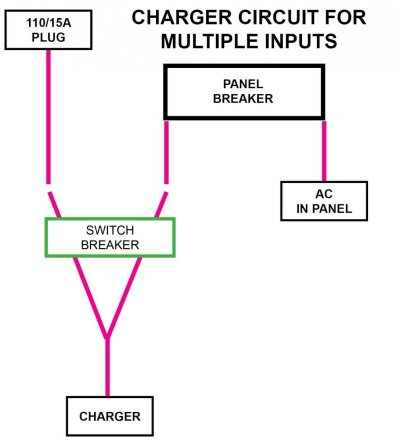Can we discuss multiple battery chargers?
First, often we see multiple power sources/chargers working at the same time on the same bank.
Example: When the engine is running the alternator is charging the batteries, and with the generator on, it's charging the same batteries thru the charger. No issue
How about a shore power that powers a charger which charges the batteries. And a generator powering a different charger, both charging the same batteries.
But you can't use the shore power AND the generator to charge the same batteries thru one charger.
So, what's the protocol and limitations with multiple power sources and/or multiple chargers or combinations?
=====
I currently have a 110-15a power supply to a small charger to top off the batteries, and occasionally will have the engine running also charging, AND occasionally have the generator running and charging (all at the same time), without an issue. However, there is only one power source to each charger (or alternator) that is supplying the batteries.
Comments?
(also posted on MTOA)
First, often we see multiple power sources/chargers working at the same time on the same bank.
Example: When the engine is running the alternator is charging the batteries, and with the generator on, it's charging the same batteries thru the charger. No issue
How about a shore power that powers a charger which charges the batteries. And a generator powering a different charger, both charging the same batteries.
But you can't use the shore power AND the generator to charge the same batteries thru one charger.
So, what's the protocol and limitations with multiple power sources and/or multiple chargers or combinations?
=====
I currently have a 110-15a power supply to a small charger to top off the batteries, and occasionally will have the engine running also charging, AND occasionally have the generator running and charging (all at the same time), without an issue. However, there is only one power source to each charger (or alternator) that is supplying the batteries.
Comments?
(also posted on MTOA)

